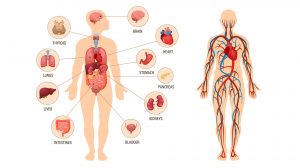Definition
noun
(genetics) The transfer of genes from parents to offspring
Supplement
Gene transfer refers to the movement of genetic material. There are two types of gene transfer: (1) vertical gene transfer and (2) horizontal gene transfer (or transposition). In vertical gene transfer, the transfer of genetic material is from parents to offspring. It may be through sexual or asexual reproduction. In contrast, the horizontal gene transfer is the movement of genetic material from a donor organism to a recipient organism that is not its offspring.
In plant breeding, vertical gene transfer is applied by crossing two plants sexually so that their genes are passed on to the next generations. Such as in the case of a cross between a transgenic crop with herbicide resistance gene and a non-transgenic crop. The novel gene may subsequently be acquired by the non-transgenic crop. This is particularly utilized in order to breed crops with desired traits. For instance, in 1930s, plant breeders were able to develop rust-resistant variety of Triticum sp. (wheat) referred to as Hope.1
Abbreviation / Acronym: VGT
Compare:
See also:
Reference(s):
1 Pratap, A. & Kumar, J. (2014). Alien Gene Transfer in Crop Plants. New York, NY: Springer.







